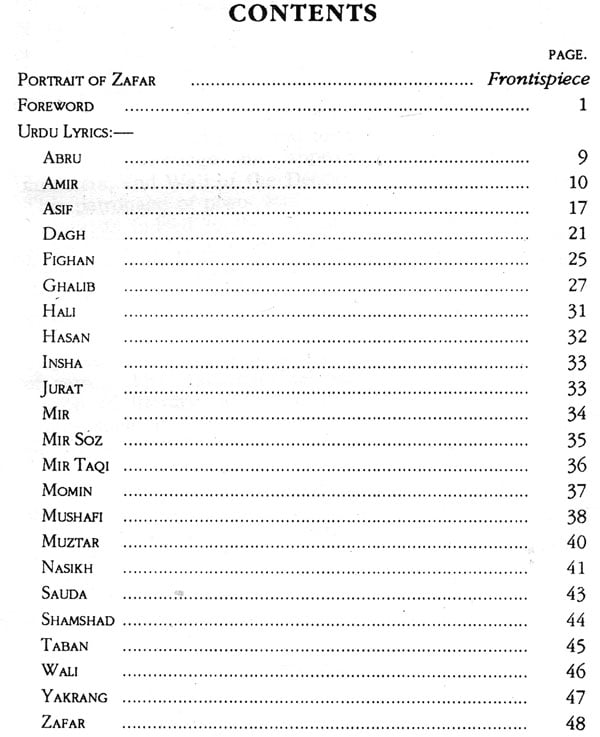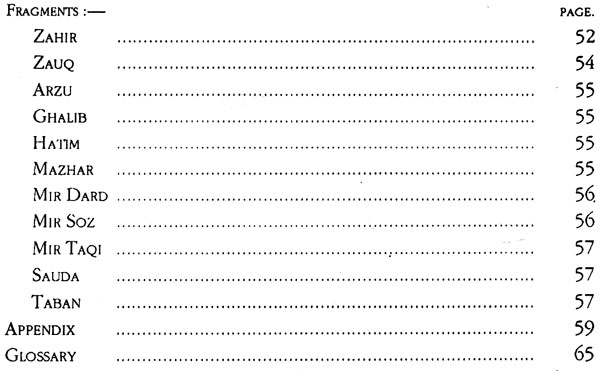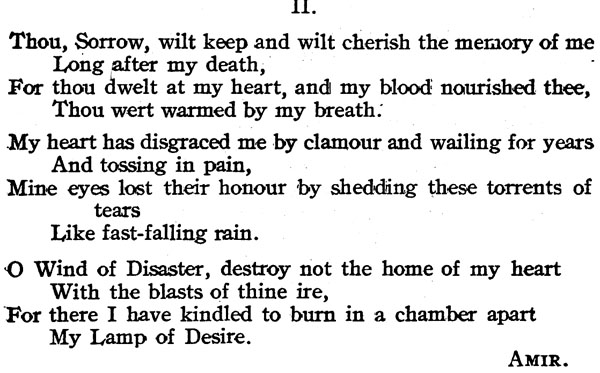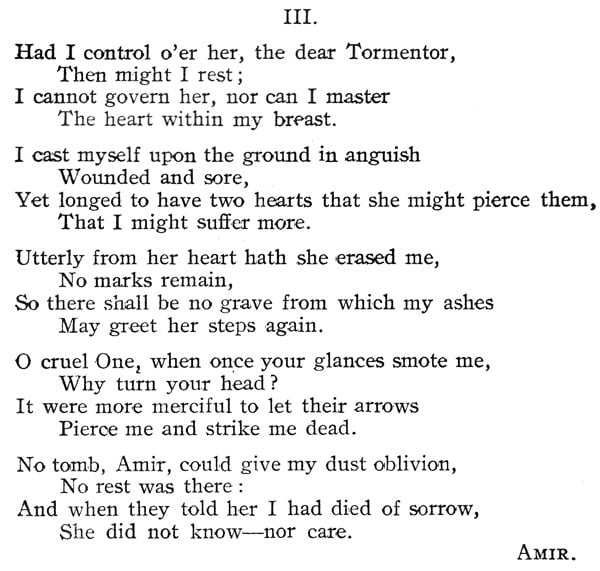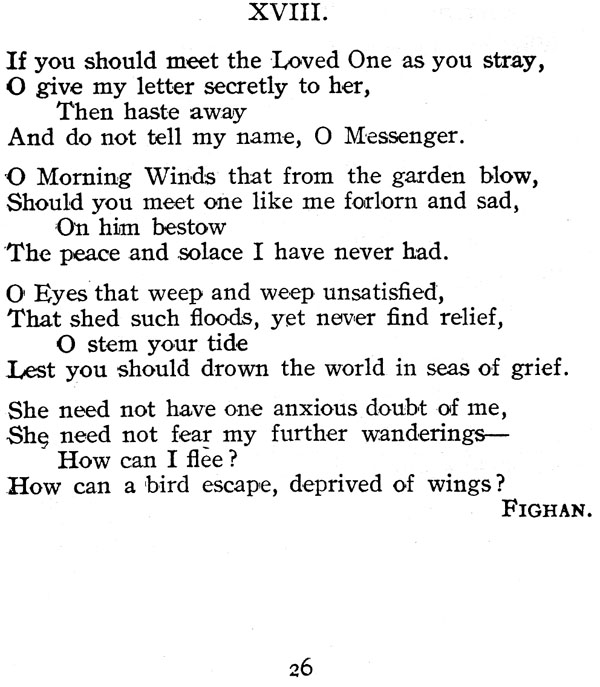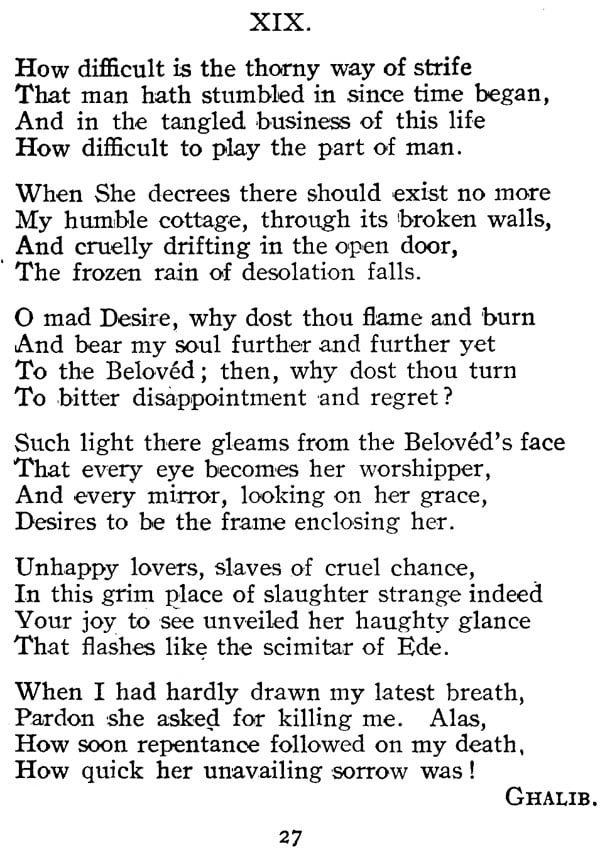
Hindustani Lyrics
Book Specification
| Item Code: | NAV208 |
| Author: | Hazrat Inayat Khan |
| Publisher: | MOTILAL BANARSIDAS PUBLISHERS PVT.LTD |
| Language: | English |
| Edition: | 1996 |
| ISBN: | 9788120814363 |
| Pages: | 65 |
| Cover: | PAPERBACK |
| Other Details | 9.00 X 5.00 inch |
| Weight | 70 gm |
Book Description
"For the first time after some 80 years the collection of Sufi poetry the young Hazrat Inayat Khan (1882-1927) collected is becoming available again. It reflects his deep love for these outpourings of the heart and his affection for his peers on the path. The English rendering is typical of the outgoing Victorian age. But even today its devotional nature and blossoming de-scription seem to be apt to the rich flowering of the Urdu original. It is a happy occasion to meet with so many friends on the path, rarely happening in these modern times."
Hazrat Sufi Inayat Khan (Baroda, 1882-Delhi 1927) was a fa-mous musician in his young years. Later he left for the West in order to spread the Sufi message of love, harmony, and beauty. He preached Sufism not as an orthodox sect, but as a forward-look ing world message of interreligious brotherhood. He founded many Sufi centres in the West, where the message is spreading now. At home, in India, the Sufi message has got an inspiring centre at the Dargah of the Master himself, located near the tomb of Hazrat Nizamuddin Aulia, New Delhi.
OF the many languages of India, Urdu (Hindustani) is the most widely known, especially in Upper India. Both as a written and a spoken language it has a reputation throughout Asia for elegance and expressiveness. Until the time of Muhammad Shah, Indian poetry was written in Persian. But that monarch, who mounted the throne of Delhi in 1719, greatly desired to make Urdu the vogue, and under his patronage and approval, Hatim, one of his ministers, and Wali of the Deccan, wrote Diwans in Urdu. This patronage of poets was continued by his successors, and exists indeed to the present day; and the cultivation of Urdu poetry has always been encouraged at the many Courts of India. Some of the Indian Rulers are themselves poets, and find their duty and pleasure in rewarding with gifts and pensions the literary men whose works they admire. The Court of Hyderabad has for long had a circle of poets : the late Nizam was himself eminent as a writer of verse. The Maharaja-Gaekwar of Baroda is a generous patron of literary men, and the present Rulers of lesser States such as Patiala, Nabha, Tank, and Rampur, are deeply interested in the cultivation of poetry in their Dominions.
**Contents and Sample Pages**
